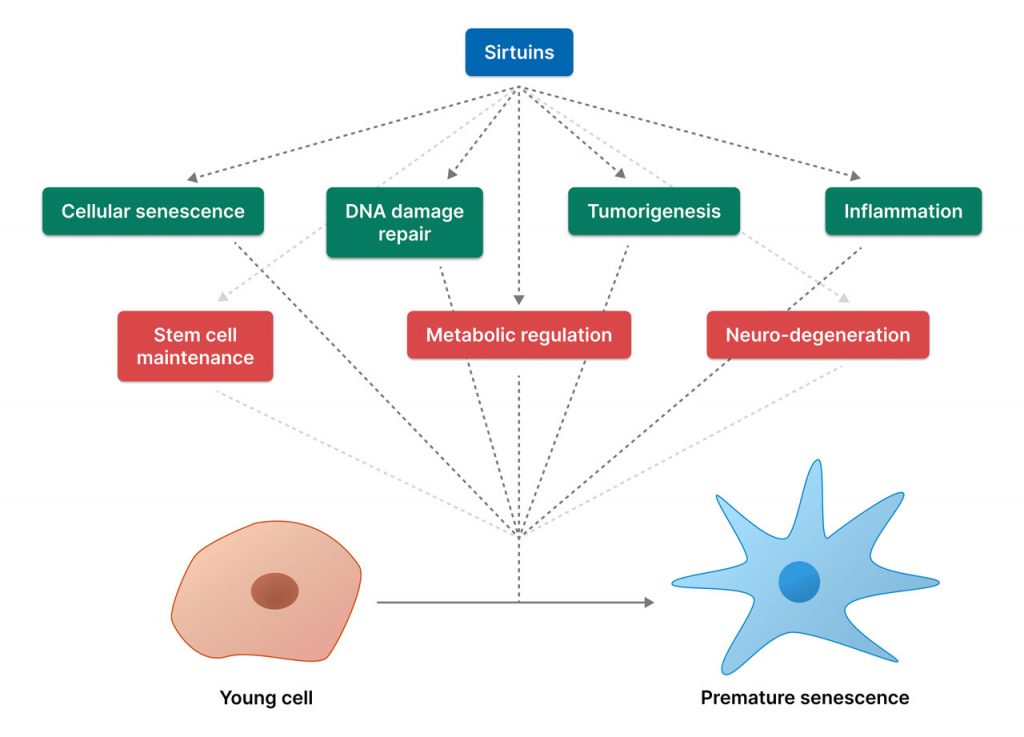- Grabowska W, Sikora E, Bielak-Zmijewska A. Sirtuins, a promising target in slowing down the ageing process. Biogerontology. 2017 Aug;18(4):447-476. doi: 10.1007/s10522-017-9685-9. Epub 2017 Mar 3. PMID: 28258519; PMCID: PMC5514220.
- Ghosh, S., Zhou, Z. SIRTain regulators of premature senescence and accelerated aging. Protein Cell 6, 322–333 (2015). https://doi.org/10.1007/s13238-015-0149-1
Protecting DNA is vital to thwarting age-related conditions. Guardian proteins called sirtuins do this by modulating DNA repair. They also participate in critical metabolic processes like immune responses.
Sirtuins have ignited extreme interest among aging scientists, as they have been shown to have strong ties with longevity and healthy aging. Thus, researchers continue to explore this family of proteins to dissect their relationship to premature aging and elucidate the hidden mechanisms behind the progression of age-related conditions.
Sirtuin Activity Diminishes with Aging
Protecting our genetic blueprints (DNA) is vital to thwarting age-related conditions. During aging, DNA accumulates damage from a myriad of factors, including solar radiation, chronic inflammation, imprecise DNA replication, and reactive oxygen species – compounds that induce oxidative stress. These harmful factors can trigger cellular senescence (deterioration), sparking the development of many age-related conditions, ranging from insulin resistance to neurodegeneration.
To combat aberrant DNA changes, our cells utilize the power of sirtuins. Although sirtuins are potent DNA repair molecules, the activity of these guardian proteins significantly decrease as we age, putting aged individuals at greater risk for adverse health effects. The reason for diminished sirtuin activity upon aging is the gradual decline of the life-preserving enzyme nicotinamide adenine dinucleotide (NAD+), which sirtuins need for activation.

Modulatory Effects of Sirtuins
Sirtuins modulate a diverse array of cellular functions associated with healthy aging, including metabolic regulation and DNA repair, resulting in protective effects such as tumor formation inhibition. By modulating cellular function, sirtuins are capable of ameliorating age-related conditions and extending the lifespan of multiple organisms, including mice.
Sirtuins also contribute to mitochondrial maintenance. In addition to balancing mitochondrial oxidative stress through ROS regulation, sirtuins contribute to the sufficient production of ATP, allowing our cells to acquire the necessary energy to function correctly. With all the anti-aging effects of sirtuins in mind, researchers have studied sirtuins as a therapeutic target for aging and have already identified several sirtuin activators, including NAD+ and its precursors, as well as plant-based compounds called polyphenols, which can be found in foods like nuts, berries, vegetables, and olives.